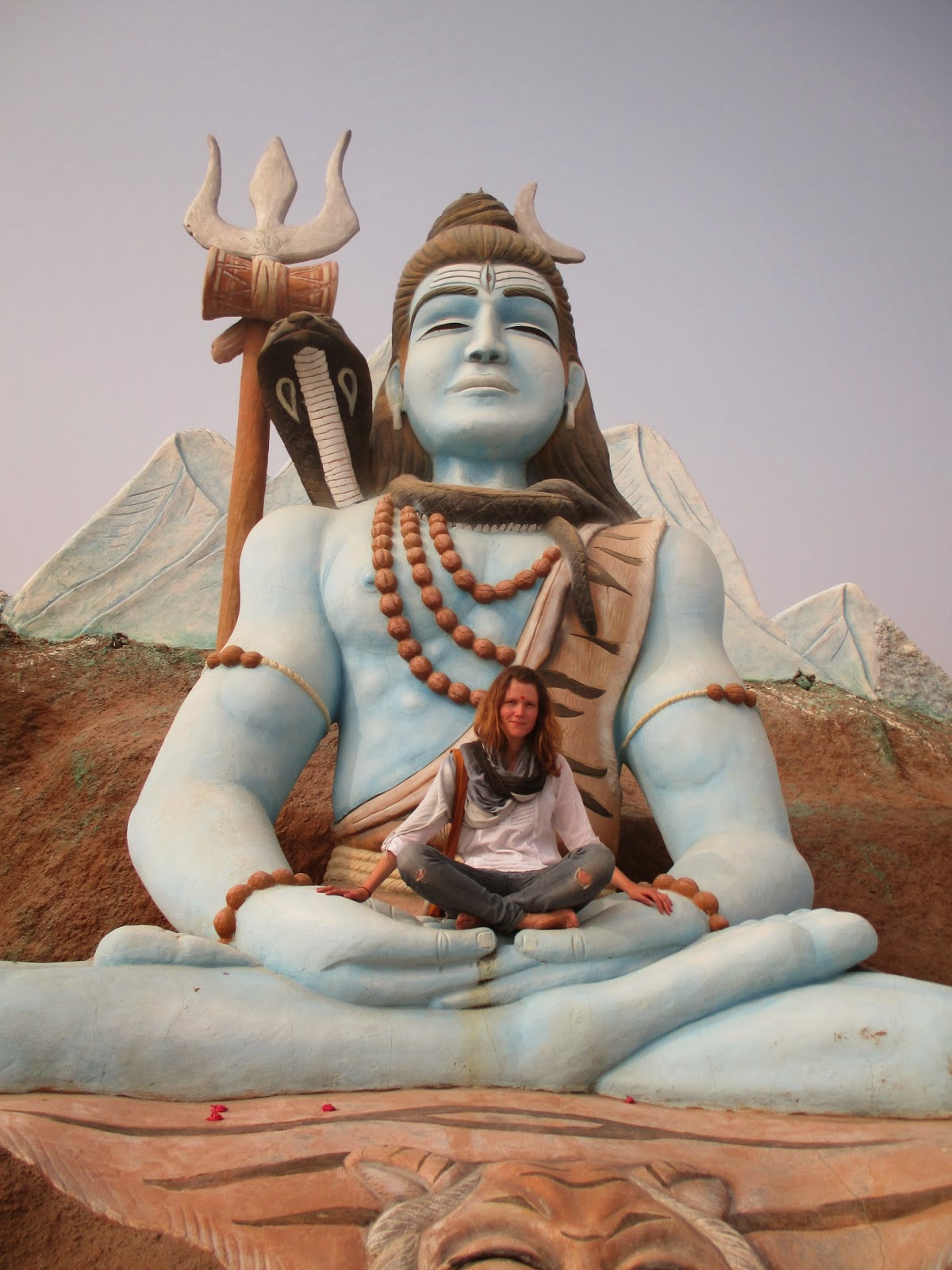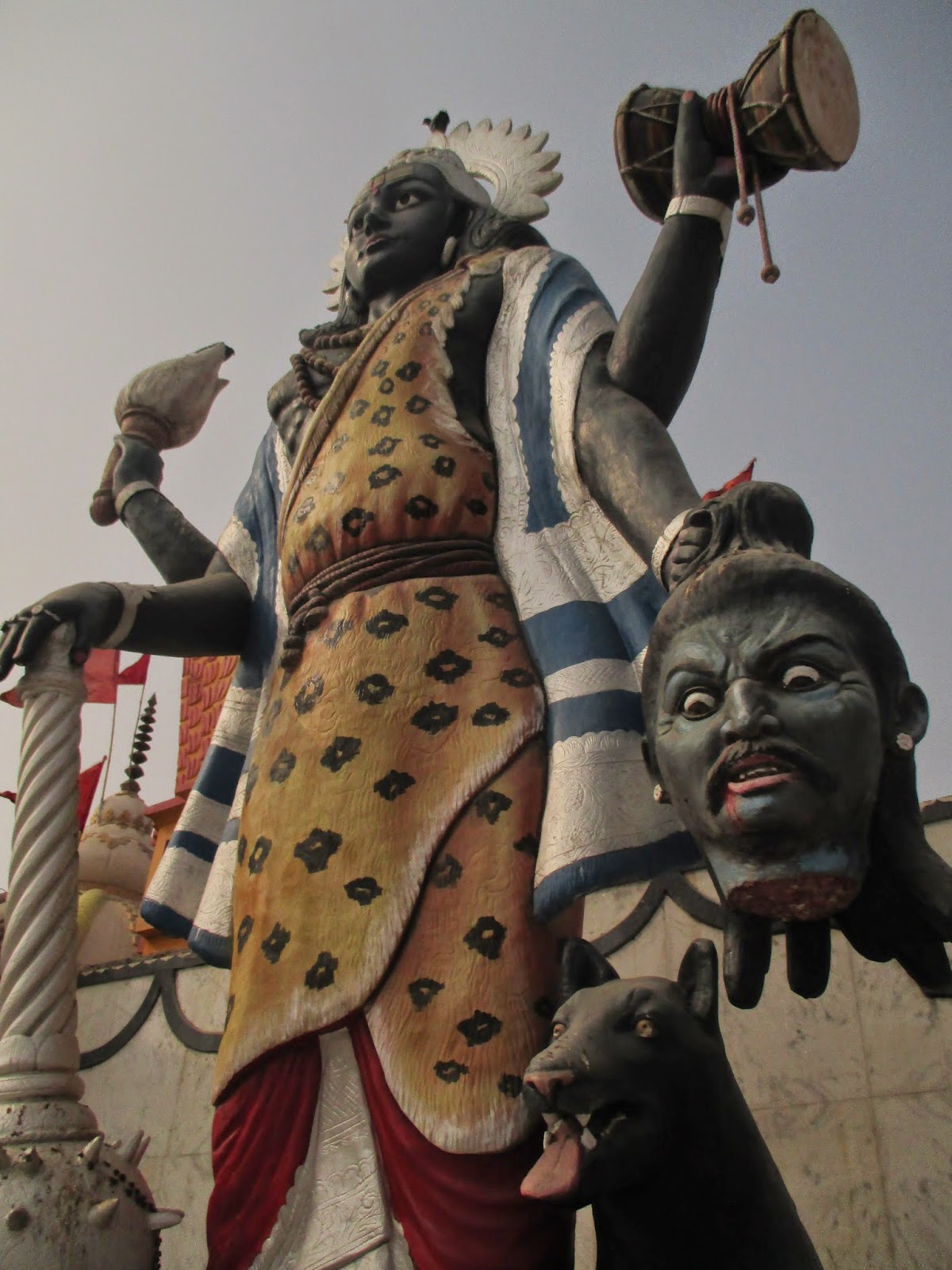The New Year's begun, as we were leaving Varanasi. It's been almost a month now we are living in Rajasthan, in the desert. 2015 brings a lot of changes in our journey, in our destinations as well as in our ways of travelling. If we want to someday come back to Europe, we need to adapt our plans. This means : more volunteering (as we did last month in Darjeeling), to get accomodation in exchange of a few hours of work, and modifications in our route, as we realized less the countries, less the visas to pay. Bhutan was out of the list for a long time already, Myanmar would drive us out of budget, and even the rest of south-east Asia seems complicated now, as we want to take the trans-siberian railway later in the spring to come back home.
For the last three weeks we have been volunteering in a hotel in Bikaner, by the desert. Every morning I wake up around 5-5.30 to start the boiler, and feed it with wood continuously until 9 a.m.. No electric boiler here, so someone has to manage the fire every morning in order to provide hot shower for customers. It's a funny job. I like to work in early mornings, and finishing my work around 9.30, my whole days are free! We are not the only volunteers here. We share our work and our dorm with other volunteers from France and from Russia. Nice atmosphere and lot of fun!
In our free time we hang out in Bikaner. Bikaner is a town of Rajasthan, out of the traditionnal touristic routes. When we walk in the streets, people are usually surprised to see white people and like to chat with us. But English is not as well known here as in the rest of India, so conversations are sometimes limited. However when people know english, it's amazing how fast you can make friend with someone here. We met Praveen, a young and very nice student of Bikaneer, and he already invited us for diner with the whole family on our first week here. It was a surreal and magical moment. They were all very nice, and the cake so tasty. We still meet him very often and he shows us around Bikaner.
Bikaner is a real Indian city, with cows and rickshaws, temples and street food. The proximity of the desert add camels to the picture. Those big animals on spider legs are a common encounter in the streets. The absence of tourists make the city very "true" - sans chichi. Last weekend we spent in the desert. On camel we crossed dry lands of small spiky bushes and holes of sand mice. On the hottest hour we also crossed a desert village for our camels to drink. The village was made of small white houses with flat roofs. Children running around us on the sandy road with smily "how are you!". Later that day we reached our camp where we kept some rhum to face the cold night.
One the most "true Indian experience" we had here was definitly in the general hospital... A couple of days ago we went the hospital. We're both fine, but one of the volunteers had an accident on her way to Jaisalmer and we went to visit her there. The place was incredible. Like an Indian railway station with a hint of European war movies. We entered the dusty halls were the sick crowd was gathering. Pigeons were flying around old women in coma lying on medical beds in the middle of the corridor. Surgical rooms were less hygienic than a butchery in Europe. A nurse asked for backshish and rats were hiding in the bathrooms. The room where our friend was sleeping really recalled WWI movies. Busy nurses walking arround rows of narrow white metal beds in a big concrete hall. Inside the smell gives you nausea more even than in the rest of the hospital. Tince almost fainted when she came along. This is India.
Today we saw rats in another place : the Karni Mata temple of Deshnok, about 30 km from Bikaner. This place was amazing. Inside the temple, hundreds of rats are running around, eating, playing, fighting, chilling... Because Karni Mata wanted to bring her young son back to life after his tragic death, she negociated the life of her child in a way that now on all the members of her family would be reincarnated into rats. Pilgrims bring them food and chill out with their family sitting in the middle of the animals. Either you are amused or disgusted, this temple is a very special place.
During our stay here, Tince took a lot of notes in her diary. Here are some quotes and pictures of Bikaner :
Nav ne jausmas, kāds datums, Janvāra vidus, veļas diena
Tikai tagad, patiešām dzīvojot kopā ar indiešiem, sāku pa īstam apjēgt neskaitāmās kultūru atšķirības, gribas teikt, dīvainības. Es varētu rakstīt un rakstīt par to, kā viņi visi neatkarīgi no rocības un interesēm vēlas uzsākt savu biznesu (Pravinam vienalga, vērs vaļā skolas, viesnīcas vai varbūt slimnīcu); kā lai uzaicinātu meiteni apēst saldējumu vietējā kafejnīcā, viņu vispirms vēlams apprecēt; kā pilnīgs loģikas trūkums izpaužas visikdienišķākajās situācijās; kā ir pilnīgi pieņemami nostāties citam aiz muguras un blenzt pār plecu vai tukšā vilcienā apsēsties tieši blakus vienīgajam pasažierim; kā uz ielas garāmgājējs var pajautāt - Are you friends or... zīmīgs klusums... Jā, jā, mēs guļam kopā! Un tā tālāk, un tā joprojām. Tūrisma industrijas radītais reklāmas sauklis Incredible India! šeit iegūst pavisam citu nozīmi.
Višnu templis, veidots Flinstonu stilistikā, drīzāk atgādina atrakciju parku nekā templi.
19.01.15.
Šorīt atgriezāmies no kamieļu safari. Sāp muskuļi un pašapziņa (par savu būšanu formā, haha). Jāt ar kamieli ir jautri, vislabāk ir sēdēt priekšā, no kurienes paveras labāks skats uz apkārtni un var novērot zvēra uzvedību. Aizmugurējais beņķis ir komfortablāks, taču nav kur pieturēties, līdz ar to zūd ilūzija par jebkādu kontroli pār savu kamieli.
22.01.15.
Šodien piedzīvojām interesantu sarunu ar Pravinu. Par laulībām.
Izrādās, Pravins zina, ka precēsies pēc aptuveni diviem vai trim gadiem,
taču vēl nezina, ar ko! Jau tagad laiku pa laikam dažu ģimeņu tēvi
apciemojot viņa māti, apskatot mājas un arī pašu Pravinu, lai izlemtu,
izprecināt savu meitu šai ģimenei vai ne. Lēmumu, kura būs tā laimīgā,
pieņems Pravina māte. Protams, meitene būs no hinduistu ģimenes un tas
pašas kastas kā Pravins. Citādi laukos neesot iedomājams. Pilsētās, jā,
tur precoties arī aiz mīlestības. Pravins jautā arī, kam mēs dodam
priekšroku, laulībai aiz mīlestības vai aprēķina. Viņš grib zināt, kā
tas nākas, ka es un Nicolas dzīvojam kopā, bet mūsu vecāki nekad nav
tikušies. Indijā sieviete vienmēr pārvācas pie vīra pēc laulībām,
savukārt vīrs visu mūžu dzīvo zem mātes jumta. Ģimenei jāturas kopā. Ir
savādi redzēt Pravinu stāstām, kā pie viņa precinieces jāj, mazliet
smīnam, paskaidrojot, ka bija viņam reiz arī draudzene, bet to mātei
labāk nezināt. Man savukārt nav skaidrs, kas notiek ar draudzeni, kad
pienāk laiks laulāties ar citu, ģimenes izvēlētu kandidāti.
23.01.15.
Šodien pienāca ziņa, ka mūsu lidojums uz Taizemi ir atcelts. Savādi, jau otrais atceltais lidojums šogad, un jau atkal tas mūs nemaz nesatrauc! Drīzāk pat jūtamies priecīgi, jo jau kādu laiku domājām, vai tikai nesteidzamies par agru prom no Indijas, un uztraucāmies, ko līdz pavasarim sadarīsim Taizemē. Nu mūsu priekšā visi ceļi ir atkal vaļā, un briest jauni plāni.
Šodien pienāca ziņa, ka mūsu lidojums uz Taizemi ir atcelts. Savādi, jau otrais atceltais lidojums šogad, un jau atkal tas mūs nemaz nesatrauc! Drīzāk pat jūtamies priecīgi, jo jau kādu laiku domājām, vai tikai nesteidzamies par agru prom no Indijas, un uztraucāmies, ko līdz pavasarim sadarīsim Taizemē. Nu mūsu priekšā visi ceļi ir atkal vaļā, un briest jauni plāni.
24.01.15.
Vakarnakt debesis rotāja horizontāls mēness sirpis. Kā mirdzošs Češīras kaķa smaids . Istabas biedrene Olga saka, ka ko tādu esot redzejusi agrāk, Taizemē.

























